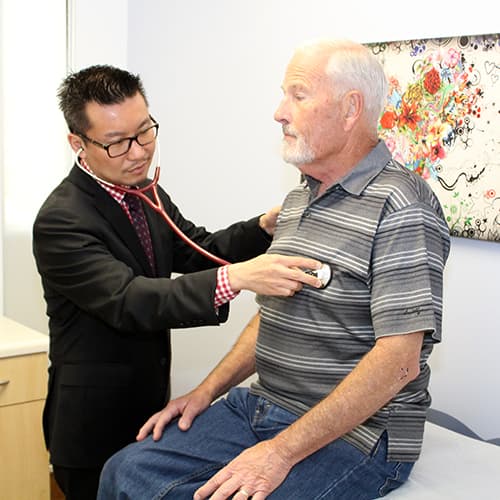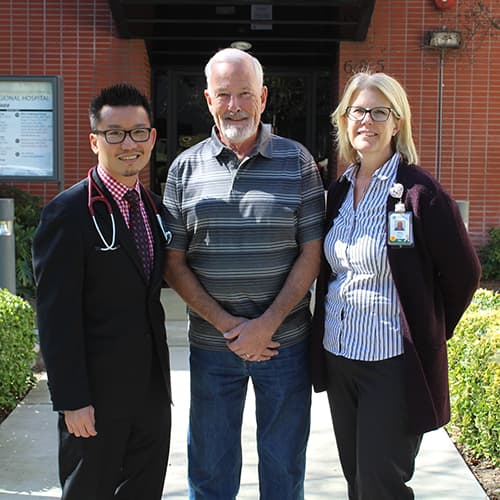A Heart in Good Hands
"It was the easiest thing I've ever gone through".
For the next fifty-plus years, Chuck lived a seemingly healthy life, until a vacation in Maui set him back. While on the island, he suffered a TIA (mini-stroke) and spent a night in the hospital. Back home in Orange County, Chuck’s cardiologist prescribed a blood thinner. The medication was effective at keeping another stroke at bay, but Chuck struggled with the side effects of excessive bleeding and bruising. His cardiologist tried to slowly stop the medication, but each time, Chuck would eventually suffer another TIA and would need to start the blood thinner again. This continued for 12 to 13 years with no resolution in sight.
Chuck’s daughter, Alison Legendre, is a cardiac RN and the Director of Cardiac Services at San Antonio Regional Hospital. After his fourth TIA, Alison had a nagging feeling that something wasn’t right and mentioned her father’s situation to Larry Chan, DO, an interventional cardiologist at San Antonio. Dr. Chan suspected Chuck might have a hole in his heart which could be causing the TIAs. He suggested that Chuck undergo a TEE (Transesophageal Echocardiography) test available at San Antonio. Dr. Ramesh Bansal, a specialist in TEE, performed the test which involves placing a scope with a camera down the esophagus to produce detailed pictures of the heart structures and valves using high frequency sound waves. Chuck indeed had a hole in his heart, known as a Patient Foramen Ovale or PFO.
Dr. Chan closed the hole in Chuck’s heart through a minimally-invasive procedure in San Antonio Regional Hospital’s cardiac catheterization lab. The repair was done by threading a catheter with the closure device through a vein in the groin, and then advanced into the area of the heart with the defect. Transcatheter structural heart repair as it is called, is shown to have good outcomes, few complications, and quick recovery for the patient.
“It was the easiest thing I’ve ever gone through,” remarked Chuck. After suffering with mini-strokes and unwanted medication complications for years, Chuck’s heart landed in good hands and his prognosis is excellent!

Larry Chan, DO with his patient Chuck Miller.

Larry Chan, DO; Chuck Miller, Chuck's daughter Alison Legendre, RN.



